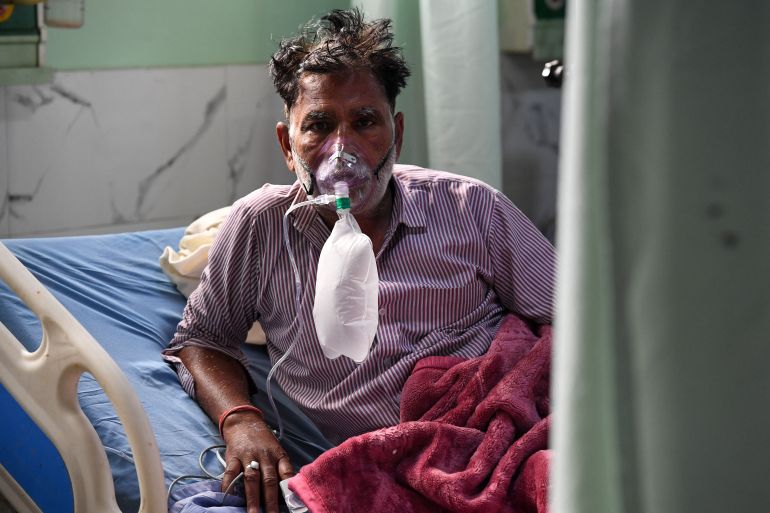What we know about COVID variant first found in India
WHO says variant first identified in India last year is of global concern, with studies showing it spreads more easily.

India is witnessing the world’s sharpest spike in coronavirus infections, with hospitals across the country running out of beds, oxygen and medicines.
Scientists are studying what led to the surge, and particularly whether a variant of the novel coronavirus first detected in India is to blame.
Keep reading
list of 4 itemsIndia’s COVID battle causes vaccine worries in Africa
France detects 20 cases of Indian COVID variant: Health minister
Now, fears of a COVID surge in India’s northeast
The variant, named B.1.617, has been reported in 17 countries, raising global concern.
Here are the basics:
What is the variant detected in India?
The B.1.617 variant contains two key mutations to the outer “spike” portion of the virus that attaches to human cells, said senior Indian virologist Shahid Jameel.
The World Health Organization (WHO) said the predominant lineage of B.1.617 was first identified in India last December, although an earlier version was spotted in October 2020.
On Monday, the WHO classified it as a “variant of concern”, which also includes variants first detected in the UK, Brazil and South Africa.
Some initial studies showed the Indian variant spreads more easily.
“There is increased transmissibility demonstrated by some preliminary studies,” Maria Van Kerkhove, WHO’s technical lead on COVID-19, said, adding it needs more information about the Indian variant to understand how much of it is circulating.
Are variants driving the surge in cases?
It is hard to say.
Laboratory-based studies of limited sample size suggest potential increased transmissibility, according to the WHO.
The picture is complicated because the highly transmissible B.117 variant first detected in the UK is behind spikes in some parts of India.
In New Delhi, cases related to the variant detected in the UK almost doubled during the second half of March, according to Sujeet Kumar Singh, director of the National Centre for Disease Control.
The variant first found in India, though, is widely present in Maharashtra, the country’s hardest-hit state, Singh said.
Prominent US disease modeller Chris Murray, from the University of Washington, said the sheer magnitude of infections in India in a short period of time suggests an “escape variant” may be overpowering any prior immunity from natural infections in those populations.
“That makes it most likely that it’s B.1.617,” he said.
But Murray cautioned that gene sequencing data on the coronavirus in India is sparse, and that many cases are also being driven by the UK and South African variants.
Carlo Federico Perno, head of Microbiology and Immunology Diagnostics at Rome’s Bambino Gesù Hospital, said the Indian variant could not alone be the reason for India’s huge surge, pointing instead to large social gatherings.
Prime Minister Narendra Modi has been criticised for his handling of the pandemic, and allowing massive political rallies and religious festivals which have been super-spreader events in recent weeks.
Do vaccines stop it?
One bright spot is that vaccines may be protective.
White House chief medical adviser Anthony Fauci said that preliminary evidence from lab studies suggest Covaxin, a vaccine developed in India, appears capable of neutralising the variant.
Public Health England said it was working with international partners but that there is currently no evidence that the Indian variant and two related variants cause more severe disease or render the vaccines currently deployed less effective.
“Our view is that this is a highly transmissible variant … [but] at this point in time, our view is it is less likely to be able to escape vaccination than some of the other variants,” English Chief Medical Officer Chris Whitty said on Monday.
“We don’t have anything to suggest that our diagnostics, our therapeutics and our vaccines don’t work. This is important,” said Van Kerkhove at WHO.